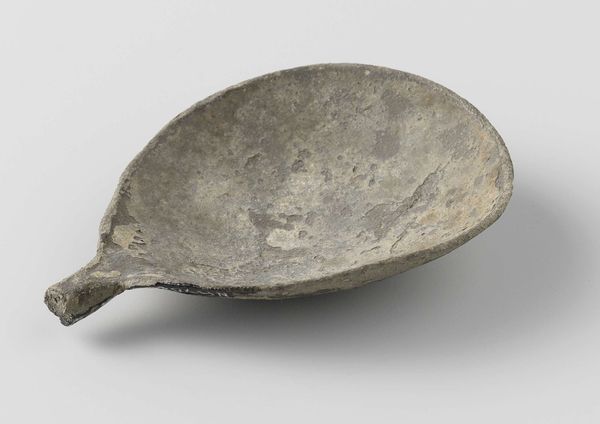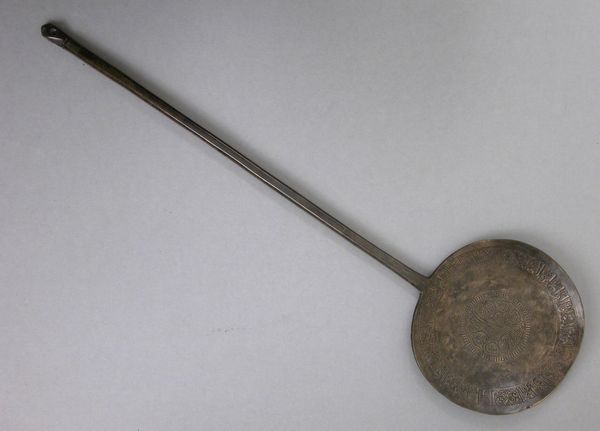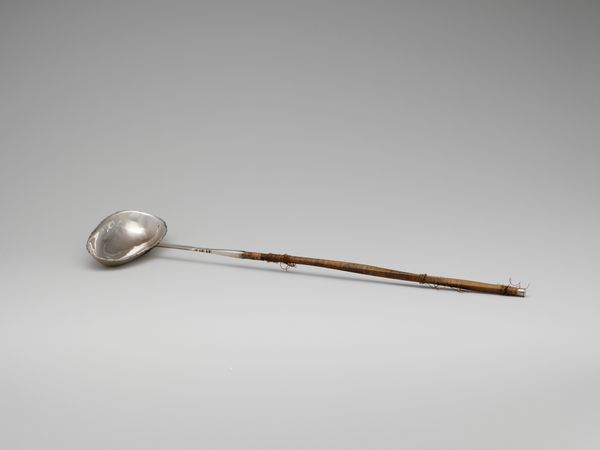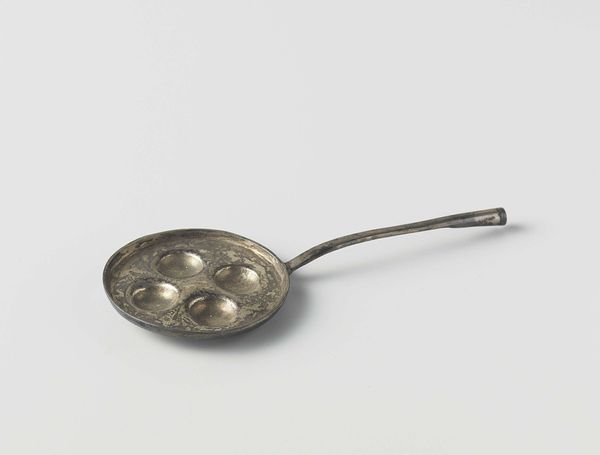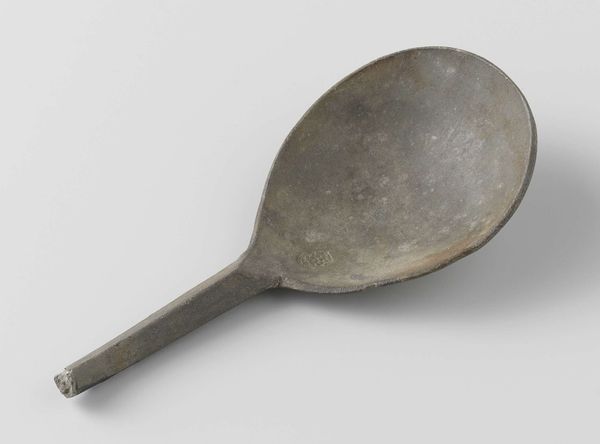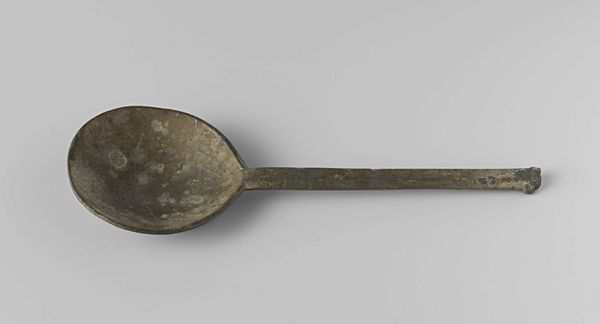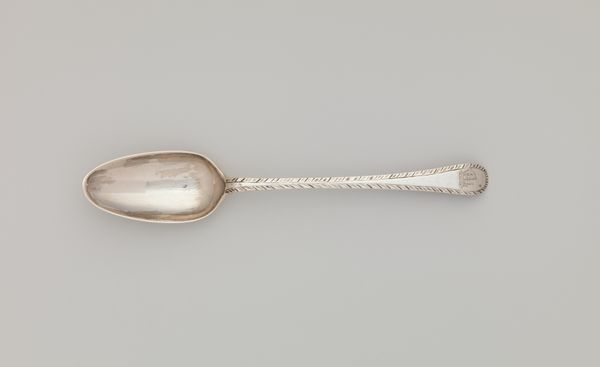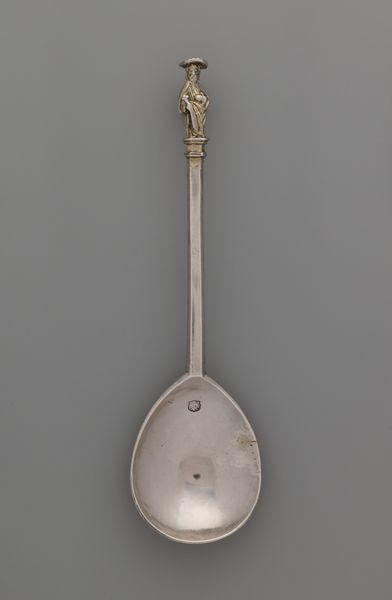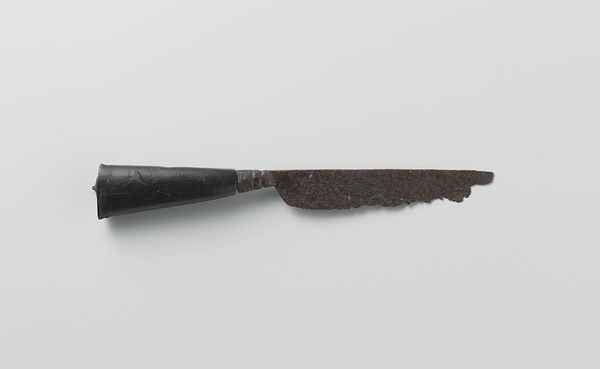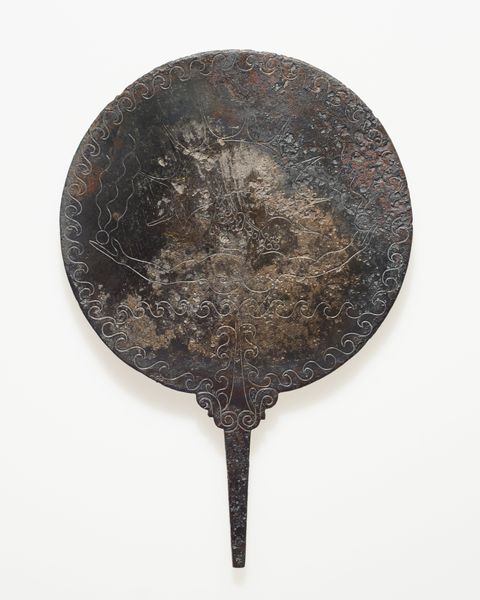
metal
#
dutch-golden-age
#
metal
#
stoneware
Dimensions: length 39.4 cm, length 27 cm, width 1.2 cm, diameter 16.9 cm
Copyright: Rijks Museum: Open Domain
Curator: Today we’re looking at "Household effects", an anonymous metal object from around 1590 to 1596, currently held in the collection of the Rijksmuseum. Editor: Well, immediately, I’m struck by the simplicity, the wear and tear. It has the melancholic, earthy tones of an aging object, marked with what feels like use and maybe even struggle. Curator: Indeed. The object, primarily of metal construction, exhibits a disc-shaped body perforated with numerous small holes, attached to a linear handle. Considering its age, the materiality speaks volumes about Dutch domestic life in the late 16th century. What strikes you about the pattern of perforations? Editor: I can’t help but see how a tool like this speaks to domestic labor. Consider that this item comes from the late 16th century, in an age when women's roles were constrained by household labor, so that makes the pattern appear somewhat chaotic but necessary to complete an ordinary task like cooking. What's intriguing is that the maker of this object is not explicitly stated, emphasizing the mundane utility it played at a moment of societal change. Curator: Certainly. While it lacks any overt artistic pretense, there’s a fundamental design at play. The handle, seemingly hand-forged, provides balance to the perforated head. The regularity of holes—albeit imperfect—introduces an ordered structure that elevates it from sheer function. Think, how did its function dictate form? The arrangement, size, and dispersal all impact efficiency, a principle we could argue predates modern ergonomics. Editor: It feels less about efficiency and more about social hierarchy. I look at the way that these commonplace things serve as the background canvas on which historical narratives are inscribed. By seeing gender, labour, and societal values entwined within the framework, we confront the inequalities inherent in that epoch and recognize those stories were long marginalized. Curator: An intriguing point, definitely adding another level of contemplation about it! Viewing "Household effects", what stands out is that functional object carries layers beyond utility—serving almost as a quiet emblem of a Dutch home of the period. Editor: Precisely, in the end, this ordinary object transcends mere usefulness. It speaks as a silent artifact with historical struggles, giving voice to the lives of those people from Dutch history that society overlooked.
Comments
rijksmuseum about 2 years ago
⋮
Among the remnants from the ‘Safe House’ were many utilitarian household objects, such as plates, cutlery and brushes. The taps originally were attached to wooden barrels containing water or wine. The ‘spike candleholders’, which could be hammered into a wooden beam, were particularly convenient.
Join the conversation
Join millions of artists and users on Artera today and experience the ultimate creative platform.
